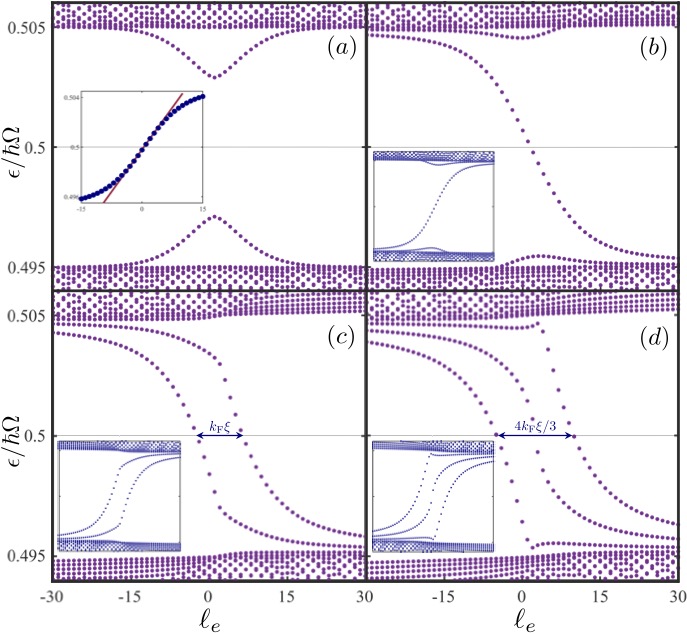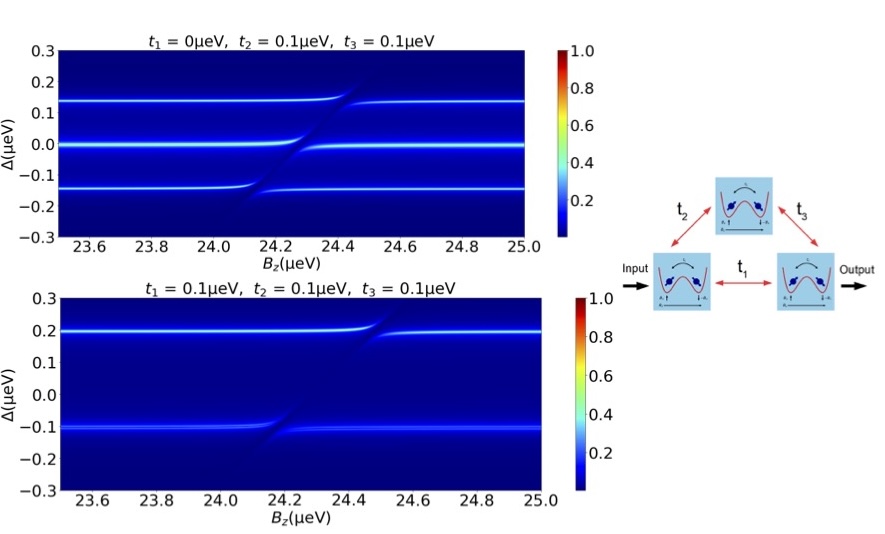Research
My research is focused on theoretical condensed matter and, in particular, the properties of low-dimensional systems. In addition to electronic and magnetic properties, recently, I began investigating the effects of vortex light irradiation on exotic materials. I am also interested on the properties of spin qubits in semiconductors connected to microwave cavities.
Electronic Properties of Strained Graphene
Due to its intrinsic thinness, graphene is easily deformed. Deviations from a flat geometry introduce changes in bond lengths and angles, which affect the material's electronic properties. We have shown that individual out-of-plane deformations introduce a charge redistribution between the two sublattices that can be detected with local probes. The breaking of the sublattice symmetry is also reflected in the separation of valley currents in real space. Our recent work shows that periodic deformations can render isolated quasi-flat bands with a non-trivial valley Chern number. We proposed that these phenomena can be realized in samples deposited on engineered substrates.

Figure: a) Schematic representation of deformed graphene membrane on top of an engineered hBN substrate to induce periodic modulation. The substrate induces a mass term \(\delta\) that breaks sublattice symmetry and opens a gap at graphene's Dirac points. A beam of circularly polarized light also introduces a mass term \(\Delta\) with a sign that depends on the polarization. b) Band structure for pristine graphene (grey) and deformed graphene. Blue and red colors identify the two valleys. c) Band structure for deformed graphene in the regime \(\Delta\)< \(\delta\). c) Band structure for deformed graphene in the regime \(\Delta\)> \(\delta\). C represents the corresponding band valley Chern number and W is the gap winding number. e) Schematic representation of the band structure undergoing the topological phase transition under light irradiation.
Phenomena Induced by Twisted Light Irradiation
The two traditional parameters of light beams that induce electronic and magnetic phenomena in materials are the light intensity and the beam's polarization. However, light beams can also carry orbital angular momentum—aka vortex light—thus opening the door to exploring new non-equilibrium states. Recently, in collaboration with Prof. Mahmoud Asmar's group at Kennesaw State University, we showed that irradiation of vortex light on massive Dirac materials produces vortices in the electronic charge distribution that trap Caroli-de Gennes states.

Figure: Quasienergy spectra for a massive Dirac material irradiated with a vortex light carrying angular momentum \(\ell\) as a function of electron angular momentum \(\ell_e\). a) - d) Spectra with orbital angular momenta \(\ell\) = 0, 1, 2, and 3, respectively. The inset in a) shows the Caroli-de Gennes Matricon (CdGM) solution for \(\ell\) = -1 that is presented in the inset of panel b). The red line fits the analytic dispersion of the CdGM states. Insets of c) and d) show solutions for \(\ell\) = -2 and -3. The vortex beam has a spatial extension \(\xi\) and frequency \(\Omega\).
Spin Qubits in Coupled Cavities
The scaling of spin qubits in semiconductors is an outstanding challenge for developing quantum computers. Double quantum dots in Si have been used to host qubits inside a microwave cavity, using photons to induce qubit-qubit interactions. We are exploring structures of several coupled cavities containing a limited number of qubits for optimal control.

Figure: Transmitted amplitude through the array of three coupled cavities shown on the right. Each cavity contains one qubit interacting with a photon field. The physical implementation of the qubit is a double quantum dot system with a micromagnet attached to induce a spin-charge interaction. The amplitude is presented as a function of \(\Delta\) detuning between driving and cavity frequencies and the external magnetic field Bz, which controls the energy levels of the qubit. a) Linear array. b) Symmetric triangular array.
Collaborations
Currently, I am collaborating with:
Prof. Mahmoud Asmar at Kennesaw State University, USA
Dr. Maria Andrea Barral at the Instituto de Nanociencia y Tecnologia, CONICET and Comision Nacional de Energia Atomica, Argentina
Prof. Adel Belayadi at the University of Science and Technology Houari Boumediene, Algeria.
Prof. Daiara Faria at Universidade do Estado do Rio de Janeiro, Brazil.
